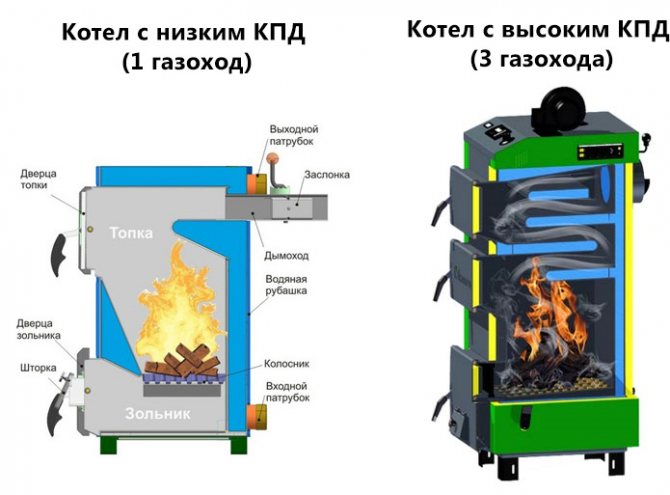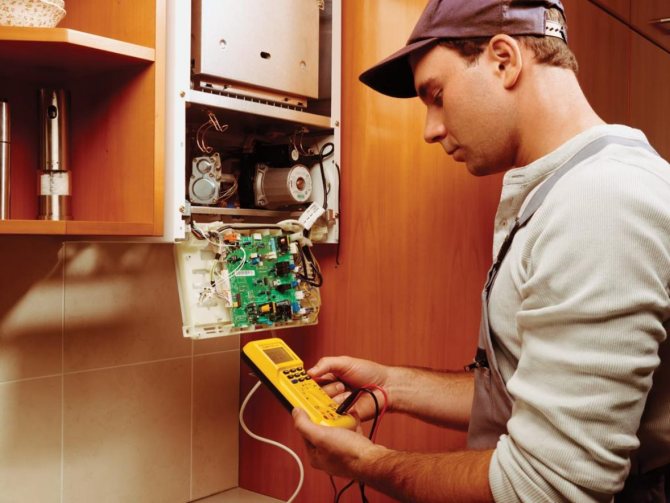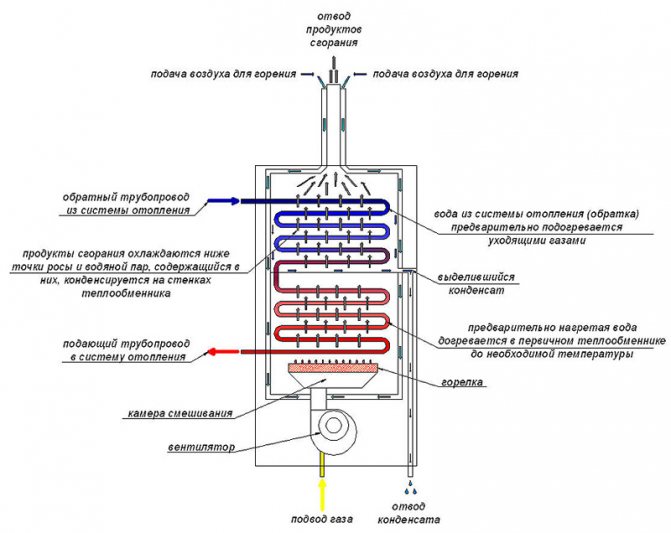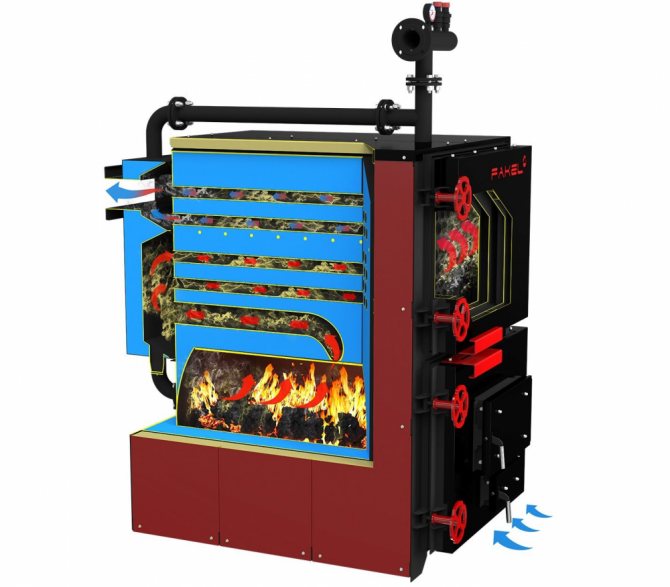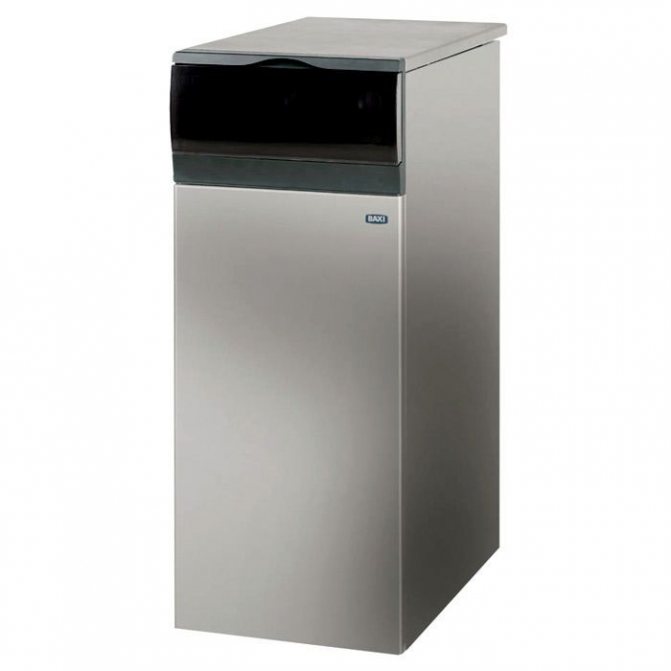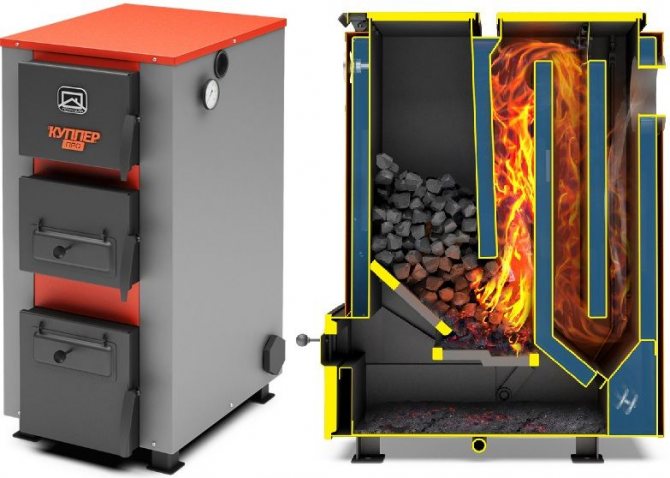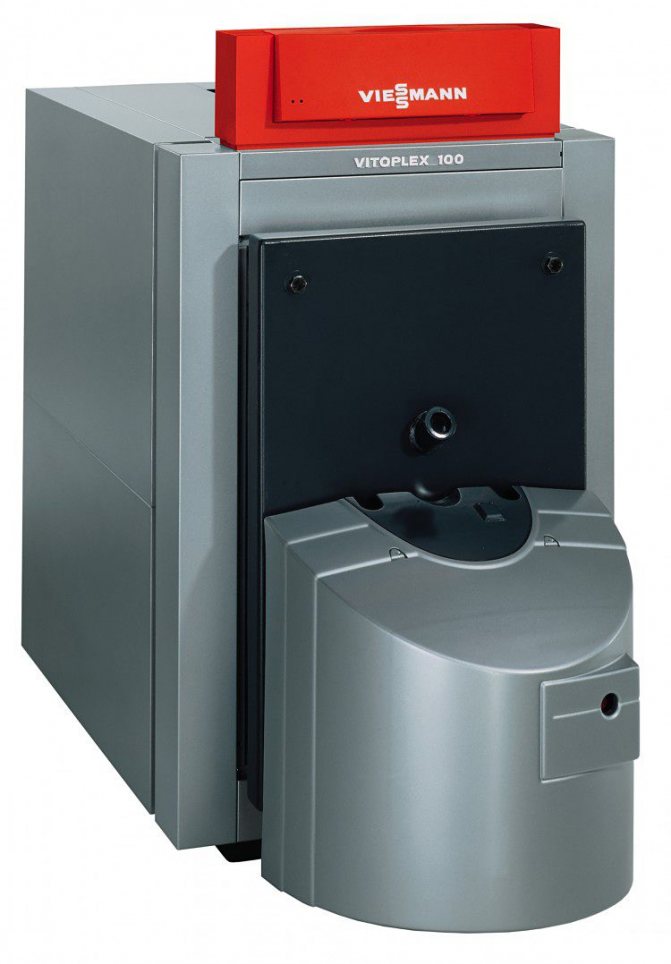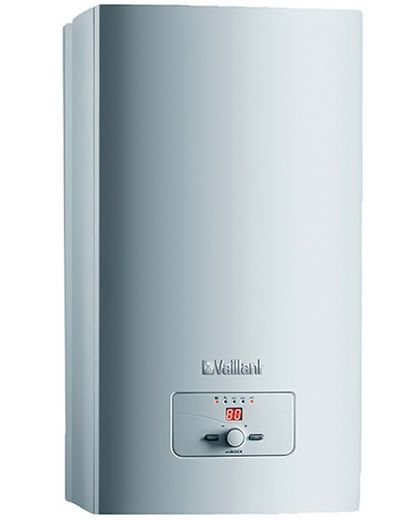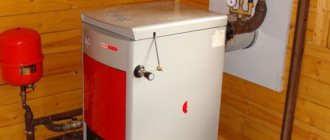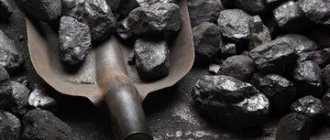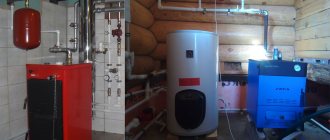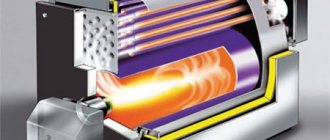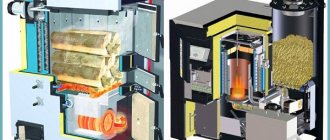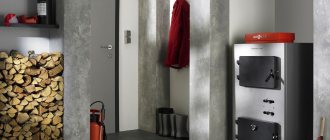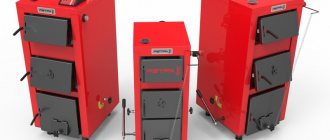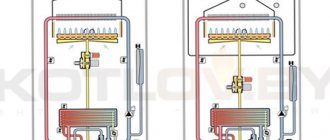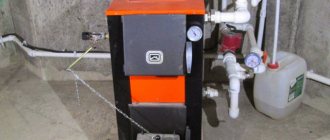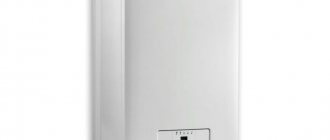How to increase Boiler efficiency (efficiency)? It doesn't matter which one: a pellet boiler, a diesel boiler or a gas boiler ... It is no secret that everyone who bought a heating boiler for their household, as a rule, firmly believes in the efficiency of the boiler, which is indicated in the manual for its operation, or in the manual for the boiler. And there, as a rule, it costs - 85%, 90%, 92% and even 95%. But few people know that at the time of operation of the boiler, it extremely rarely reaches the efficiency specified in the manufacturer's documents. Why? Let's figure it out.
So,
Gross efficiency and net efficiency
Not all of the heat generated during fuel combustion is directed to heating the coolant, a certain part is spent on the boiler's own needs: a turbine, a fan or a smoke exhauster, a circulation pump, the operation of automation and an electronic display, the operation of an electric drive (as you already understood, all types of received energy are used in the calculation , including electricity, if the boiler is volatile).
With this in mind, it is customary to divide the boiler efficiency by the heat generated (Gross efficiency) and released heat (Efficiency-net).
This classification makes it possible to single out the degree of technical perfection of the boiler - gross efficiency or economy of fuel and electricity consumption - net efficiency.
Factors on which the efficiency of boilers depends
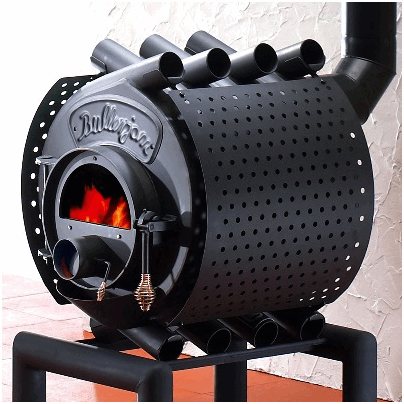
Boilers with a high efficiency value are currently represented by the following heating technology:
- units fired with coal and other solid fossil fuels;
- pellet boilers;
- devices of the pyrolysis type.
The efficiency of heating devices, in the furnace of which anthracite, coal and peat briquettes are fed, averages 70-80%. Significantly higher efficiency of pellet devices - up to 85%. Loaded with pellets, heating boilers of this type are distinguished by their high efficiency, they release a huge amount of thermal energy during the combustion of the fuel.
On a note: one load is enough for the device to work at optimal conditions for up to 12-14 hours.
The absolute leader among solid fuel heating equipment is a pyrolysis boiler. These appliances use firewood or wood waste. The efficiency of such equipment today is 85% or more. The units also belong to highly efficient long-burning devices, but subject to the necessary conditions - the moisture content of the fuel should not exceed 20%.
The type of material from which the heater is made is important for the value of the efficiency. Today on the market there are models of solid fuel boilers made of steel and cast iron.
For reference: The first includes steel products. To reduce the market value of the unit, manufacturing companies use basic structural elements made of steel. For example, the heat exchanger is made of high-strength heat-resistant black steel with a thickness of 2-5 mm. The heating tubular elements used to heat the main circuit are manufactured in the same way.
The thicker the steel used in the structure, the higher the heat transfer characteristics of the equipment. The efficiency increases accordingly.
In devices made of steel, an increase in efficiency is achieved by installing special internal partitions in the form of pipes - stages of the main flow and smoke diffusers. Forced and partial measures, allowing to slightly increase the efficiency of the main device. Among the models of steel solid fuel boilers, you can rarely find devices with an efficiency higher than 75%. The service life of such products is 10-15 years.
In order to increase the efficiency of steel heating boilers, foreign companies use the bottom combustion process in their models, with 2 or 3 draft flows. The design of the products provides for the installation of tubular heating elements to improve heat transfer. Such equipment has an efficiency in the range of 75-80%, and can last longer, 1.5 times.
Unlike steel aggregates, cast iron solid fuel apparatuses are more efficient.
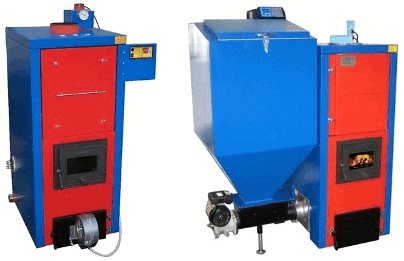

In the design of cast iron units, heat exchangers made of a special grade cast iron alloy with high heat transfer are used. Such boilers are most often used for open heating systems. The products are additionally equipped with grates, thanks to which an intensive selection of heat energy is carried out directly from the burning fuel placed on the grates.
The efficiency of such heating devices is 80%. It is necessary to take into account the huge time periods of operation of cast iron boilers. The service life of such equipment is 30-40 years.
How to calculate the efficiency of a heating boiler
There are several ways to calculate values. In European countries, it is customary to calculate the efficiency of a heating boiler by the temperature of the flue gases (direct balance method), that is, knowing the difference between the ambient temperature and the real temperature of the flue gases through the chimney. The formula is pretty simple:
ηbr = (Qir / Q1) 100%where
- ηbr (read "this") - boiler efficiency "gross";
- Qir(MJ / kg) - the total amount of heat released during fuel combustion;
- Q1 (MJ / kg) - the amount of heat that was accumulated, i.e. use to heat the house.
For example, if Q1 = 22 MJ / kg, Qir = 19 MJ / kg, then the “gross” efficiency = (19/22) * 100 = 86.3%. All measurements are carried out with an already established, standard boiler operation.
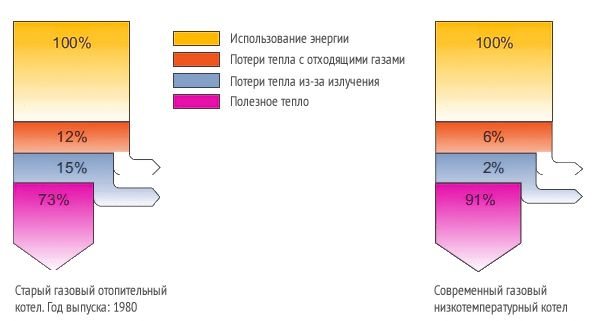

The direct balance method does not take into account the heat loss of the boiler itself, underburning of fuel, deviations in operation and other features, therefore, a fundamentally different, more accurate calculation method was invented - the "reverse balance method". Equation used:
ηbr = 100 - (q2 + q3 + q4 + q5 + q6)where
- q2 - heat loss with flue gases;
- q3 - heat loss due to chemical underburning of combustible gases (applicable to gas boilers);
- q4 - losses of thermal energy with mechanical underburning;
- q5 - heat loss from external cooling (through the heat exchanger and the body);
- q6 - heat loss with physical heat of slag removed from the furnace.
Heating boiler net efficiency according to the reverse balance method:
ηnet = ηbr - Qsnwhere
- Qs.n - total consumption of heat and electric energy for own needs in% expression.
The actual efficiency will almost always differ from that declared by the manufacturer, since it depends on the correct installation of the boiler and heating system, smoke removal system, quality of power supply, etc. It is measured, respectively, already in place.
How to increase the efficiency of solid fuel heating technology
Today, many consumers, having a solid fuel boiler at their disposal, are trying to find the most convenient and practical way to increase the efficiency of heating equipment. The technological parameters of heating devices, laid down by the manufacturer, lose their nominal values over time, therefore, various methods and means are sought to increase the efficiency of boiler technology.
Consider one of the most effective options, the installation of an additional heat exchanger. The task of the new equipment is to remove heat energy from volatile combustion products.
The video shows how to make your own economizer (heat exchanger)
To do this, we first need to know what is the temperature of the smoke at the exit. You can change it with a multimeter, which is placed directly in the middle of the chimney.Data on how much additional heat can be obtained from volatile combustion products is necessary to calculate the area of an additional heat exchanger. We do the following:
- we send a certain amount of firewood to the firebox;
- we note how long a certain amount of firewood will burn out.
For example: firewood, in the amount of 14.2 kg. burn for 3.5 hours. The smoke temperature at the boiler outlet is 460 0 С.
In 1 hour we burned down: 14.2 / 3.5 = 4.05 kg. firewood.
To calculate the amount of smoke, we use the generally accepted value of 1 kg. firewood = 5.7 kg. flue gases. Next, we multiply the amount of firewood burned in one hour by the amount of smoke obtained during the combustion of 1 kg. firewood. As a result: 4.05 x 5.7 = 23.08 kg. volatile combustion products. This figure will become the starting point for subsequent calculations of the amount of thermal energy that can be used additionally to heat the second heat exchanger.
Knowing the value of the heat capacity of volatile hot gases, as 1.1 kJ / kg., We make a further calculation of the heat flux power if we want to reduce the smoke temperature from 460 0 С to 160 degrees.
Q = 23.08 x 1.1 (460-160) = 8124 kJ of thermal energy.
As a result, we get the exact value of the additional power provided by volatile combustion products: q = 8124/3600 = 2.25 kW, a large figure, which can have a significant impact on improving the efficiency of heating equipment. Knowing how much energy is wasted, the desire to equip the boiler with an additional heat exchanger is quite justified. Due to the influx of additional thermal energy for heating the coolant, not only the efficiency of the entire heating system increases, but also the efficiency of the heating unit itself increases.
What determines the thermal efficiency of boilers
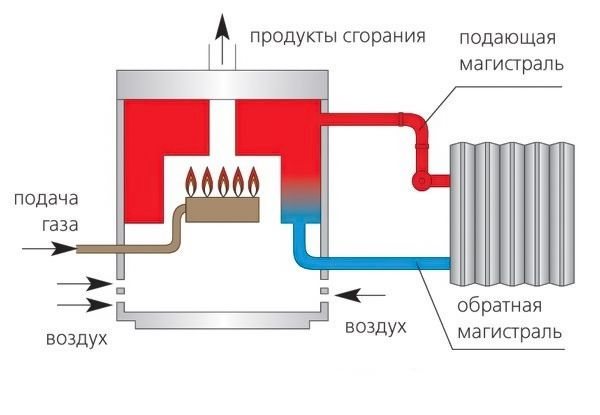

The principle of operation of the classic floor gas aspirated.
The efficiency of heating boilers is not equal at any power, there is a proportional dependence on the load: an increase in heat load (quantity of fuel burned) also increases heat loss through the body or chimney. In the same way, operation at minimum power does not always ensure complete combustion of the fuel, which leads to a decrease in efficiency.
For example, in the service instructions for gas boilers Protherm Wolf KSO with a capacity of 12.5 kW and 16.0 kW, it is indicated that when operating at maximum power (12.8 kW and 16.3 kW, respectively), the efficiency is 92.5%, while while operating with minimum load (4.5 kW and 5.8 kW), it will decrease and amount to only 78.4%.
This is one of the main reasons why it is worthwhile to consciously approach the choice of the boiler unit capacity. The most optimal performance in most models is achieved at a load in the range of 60-90% of maximum power.
Otherwise, the efficiency depends solely on the technological perfection of the model aimed at reducing the above q2-6 (lowering the temperature of the exhaust gases, efficient fuel combustion, modulating burners, thermal insulation, etc.), as well as on the quality of maintenance and operation of the boiler. The cleanliness of the coolant, regular cleaning and flushing - all this, over time, seriously affects the efficiency.
How to choose a room thermostat and save up to 30% per month on heating
Rules for the operation of boiler devices, the observance of which affects the value of the efficiency
Any type of heating unit has its own parameters of the optimal load, which should be as useful as possible, from a technological and economic point of view. The process of operating solid fuel boilers is built in such a way that most of the time the equipment works in optimal mode. This work can be ensured by observing the rules of operation of heating equipment operating on solid fuels. In this case, you must adhere to and follow the following points:
- it is necessary to observe acceptable modes of blowing and operation of the hood;
- constant control over the intensity of combustion and the completeness of fuel combustion;
- control the amount of carryover and failure;
- assessment of the state of surfaces heated during fuel combustion;
- regular cleaning of the boiler.
The listed items are the necessary minimum that must be adhered to during the operation of boiler equipment during the heating season. Compliance with simple and understandable rules will allow you to get the efficiency of an autonomous boiler declared in the characteristics, improve the operation of a solid fuel boiler.
We can say that every little thing, every element of the design of the heating device affects the value of the efficiency. A properly designed chimney and ventilation system ensure optimal air flow into the combustion chamber, which significantly affects the quality of combustion of the fuel product. The ventilation operation is estimated by the value of the excess air ratio. Excessive increase in the volume of incoming air leads to excessive consumption of fuel. Heat escapes more intensively through the pipe along with the combustion products. With a decrease in the coefficient, the operation of the boilers deteriorates significantly, there is a high probability of the occurrence of zones limited by oxygen in the furnace. In such a situation, soot begins to form and accumulate in large quantities in the firebox.
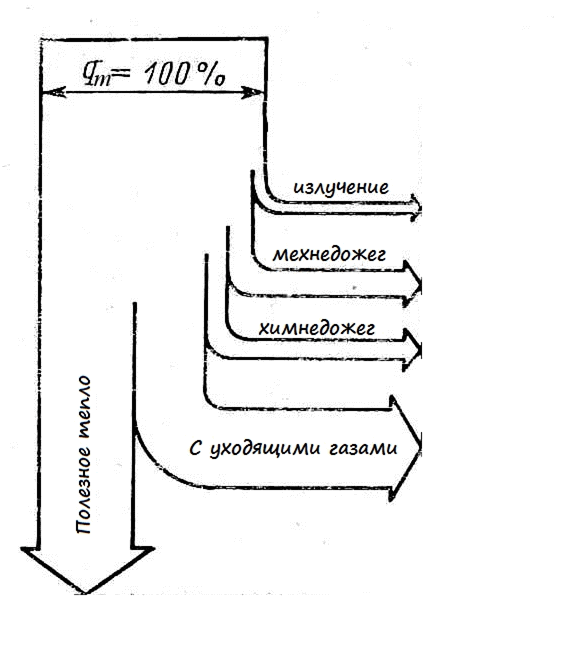

The intensity and quality of combustion in solid fuel boilers require constant monitoring. The combustion chamber must be loaded evenly, avoiding focal fires.
On a note: the charcoal or wood is evenly distributed over the grate or over the grate. Burning should take place over the entire surface of the layer. The evenly distributed fuel dries quickly and burns over the entire surface, ensuring complete burnout of solid components of the fuel mass to volatile combustion products. If you put the fuel into the firebox correctly, the flame when the boilers are operating will be bright yellow, straw in color.
During combustion, it is important not to allow the failure of the fuel resource, otherwise you will have to face significant mechanical losses (underburning) of the fuel. If you do not control the position of the fuel in the furnace, large fragments of coal or firewood that have fallen into the ash box can lead to unauthorized ignition of the residues of fuel mass products.
Soot and tar accumulated on the surface of the heat exchanger will reduce the heat exchanger's heating. As a result of all the above violations of the operating conditions, the useful amount of heat energy required for the normal operation of the heating system decreases. As a result, we can talk about a sharp decrease in the efficiency of heating boilers.
Values of modern boilers depending on the type of fuel
| Photo | Boiler type depending on the fuel fired | Average efficiency,% |
| Gas | |
| - Convection | 87-94 | |
| - Condensing | 104-116* | |
| Solid fuel | |
| - Wood burning | 75-87 | |
| - Coal | 80-88 | |
| - Pellet | 80-92 | |
| Liquid fuel | |
| - On diesel fuel | 86-91 | |
| - On fuel oil | 85-88 | |
| Electric heating elements | 99-99,5 |
*From the point of view of physics, the efficiency cannot exceed 100%: it is impossible to obtain more thermal energy than is released during fuel combustion. However, it all depends on how you count. There are two definitions:
- net calorific value - heat obtained during the combustion of fuel, when the combustion products are simply removed through the chimney;
- gross calorific value - heat, including the energy contained in water vapor - one of the combustion products of combustible gases.
Gas condensing boilers additionally accumulate thermal energy of condensate formed from gas combustion products and deposited on an additional heat exchanger. Thus, a significant part of the heat does not "fly out into the pipe", and the temperature of the exhaust gases is practically equal to atmospheric.
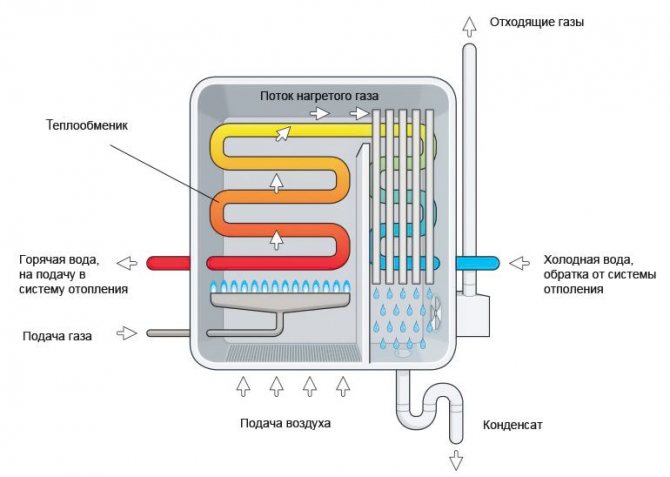

The device is a simple condensing single-circuit gas boiler.
According to the current standards, both in Russia and in Europe, the efficiency of heating boilers is calculated according to the lowest specific heat of combustion, therefore, taking into account the additional heat extracted from the condensate leads to values of more than 100%. When calculated based on the highest calorific value, the efficiency of condensing gas boilers is 96-98%, depending on the model and type of installation: wall-mounted boilers usually have higher efficiency than floor-standing boilers (this applies to all gas boilers).
It can also be noted from the table that the average efficiency of solid fuel boilers also differs depending on the fuel used, this is due to the degree of fuel combustion, its heat transfer, combustion temperature and heat loss with physical heat of slags removed from the combustion chamber. Even the same solid fuel boiler can produce different efficiency when operating on different types of fuel.
Review of popular models and prices
Manufacturers produce various types of heating units designed for a certain power, as a result of which there are some restrictions on the size of the heated area. A review of popular models and prices of solid fuel equipment allows you to determine which product is best installed in a private house.
Candle 18 AREMIKAS
The fuel for this unit is peat briquettes or sawdust. This device uses a special combustion method in which only 10–20 cm of the bottom layer of the load is burned. The resulting smoke with a distributor directs hot air to the combustion center.
When choosing any mode of boiler operation, the efficiency will always be high. Thanks to the unique design of the equipment, it is possible to save fuel even in winter.
Advantages of the Candle 18 AREMIKAS boiler:
- Stable and optimal operating mode. The minimum is 7 hours, the maximum is 34 hours.
- Setting the water temperature by means of the air draft regulator.
- Only a 10–20 cm layer of solid fuel burns out, so when the water circulation in the circuit is turned off, its temperature will rise by only 12–16 ºС.
- Ash removal is carried out 2-3 times a month, as it does not interfere with the combustion process.
- Compact size.
In the Russian market, the cost of this unit ranges from 54 to 95 thousand rubles and depends on the characteristics of the model.
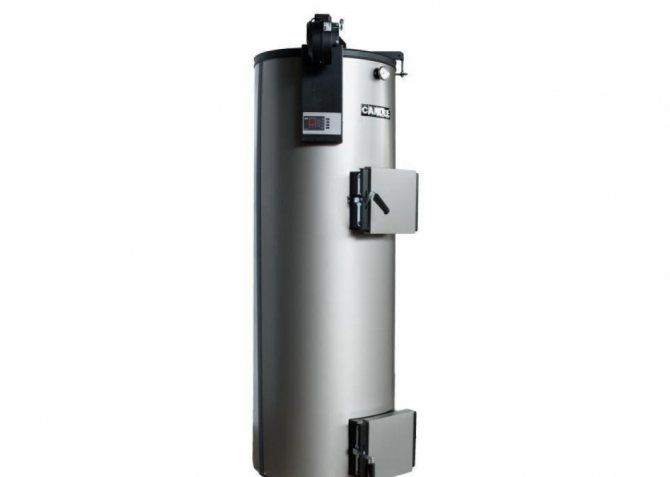

Prices for solid fuel boilers AREMIKAS
solid fuel boilers AREMIKAS
Zota Mix 40
For the operation of the Zota Mix 40 model of domestic production, coal and firewood are used as the main type of fuel, and gas and liquid are used as backup sources. To change the type of power source, the ash pan door is removed from the pellet boiler, and the combustion chamber flap is opened from the gas boiler and the burner is installed. The unit can also be powered by electricity. Stainless steel heating elements can be installed in it.
The water jacket is located along the entire boiler circuit, including under the ash pan. The design allows the bunker to be cooled and not to undergo deformation, provides additional heat removal and improves fluid circulation.
The achievement of the maximum efficiency factor is facilitated by the boiler's ability to maintain an operating pressure of 3 atm., Which also guarantees the safe operation of the heating system. Level increase up to 4 atm is allowed. for a short time. The unit is equipped with a pressure gauge to control water temperature and pressure, as well as an automatic traction regulator.
Main characteristics:
- Able to heat an area up to 400 m2.
- Boiler power - 40 kW.
- The fuel used is solid.
- By the type of installation - floor-standing.
- The minimum service life is 15 years.
- Steel firebox body.
- The average price is from 45 to 48 thousand rubles.
ZOTA MIX Specifications:
| Name | ZOTA "Mix" -20 | ZOTA "Mix" -40 | ZOTA "Mix" -50 |
| Rated thermal power, kW | 20 | 40 | 50 |
| Water chamber capacity, l | 50 | 120 | 140 |
| Pressure atm. not more | 3 | ||
| Efficiency,% | 80 | ||
| Fuel | coal, firewood, gas, diesel fuel | ||
| Heating element power, kW | 3–9 | ||
| Dimensions, mm | 475 x 415 x 1015 | 580 x 490 x 1265 | 680 x 490 x 1265 |
| Firebox (depth), mm | 300 | 400 | 500 |
| Chimney, mm | 150 | 180 | 180 |
| Pipe (height), mm | 6000 | 9000 | 9000 |
| Weight, kg | 140 | 195 | 235 |
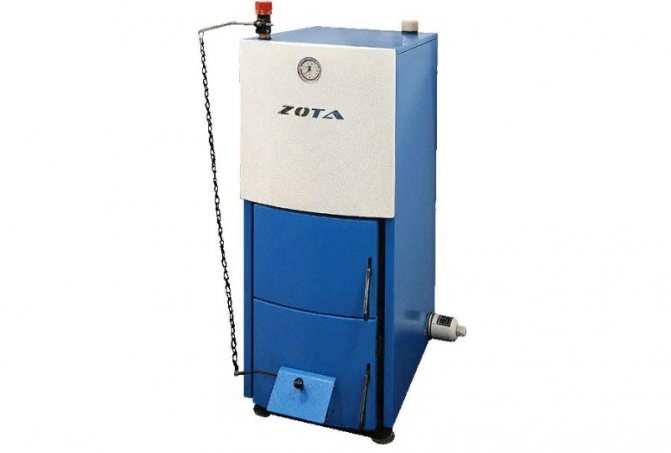

Prices for solid fuel boilers ZOTA
solid fuel boilers ZOTA
Alpine Air Solidplus-4
This model is completely independent of electricity. The boiler can be installed in private houses and summer cottages, which are located in places where there are no power lines. The service life of this unit is over 15 years.
Pros and main features of ALPINE AIR Solidplus-4:
- Supplied ready-assembled with a guarantee.
- There is a built-in thermostat.
- Mechanical control.
- High heat dissipation efficiency.
- Durability of structural elements.
- Protection against freezing and overheating is provided.
- Compact dimensions.
- Temperature control.
- High efficiency. The minimum amount of harmful emissions.
- Smooth power control.
- Low heat loss.
- Works on the principle of three-pass circulation.
- Chamber material - high quality cast iron.
- It will last almost 50 years if properly used.
- Versatile design.
- Resistant to the corrosion process.
- Economical work.
- Easy to maintain and manage.
There are models on sale that are characterized by different power, volume of combustion chambers and the number of sections, so it is always possible to choose the best option for a private house.
Characteristics:
- The country of the brand is Turkey.
- Installation type - floor-standing.
- Power when using firewood will be 25.5 kW, coal - 17 kW.
- Open combustion chamber. The number of sections is 4.
- Cast iron heat exchanger.
- Dimensions: 107 x 52 x 47 cm.
- Warranty period: 3 years.
- Price: 45 150 rub.
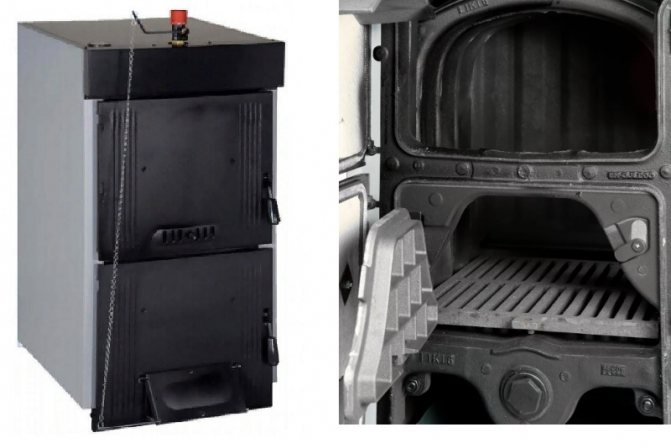

How to increase the efficiency of a gas boiler
It is almost impossible to increase the efficiency of fuel combustion by interfering with the technical device of the boiler, the same layer of thermal insulation cannot be installed due to the banal non-provision of the place for it by the manufacturer. In addition, do it yourself is prohibited. Nevertheless, there are ways to increase the efficiency of a gas boiler, especially if it is an imperfect old model:
- Finished chimney economizer - replaces a certain section of the chimney and is designed to accumulate heat from the exhaust gases through the chimney (a kind of imitation of condensing boilers). However, it is necessary to accurately calculate the parameters of the economizer and the requirements for the chimney in order to maintain the required draft and prevent reverse draft, for example, in strong winds. Issue price - 1,700-2,500 rubles.

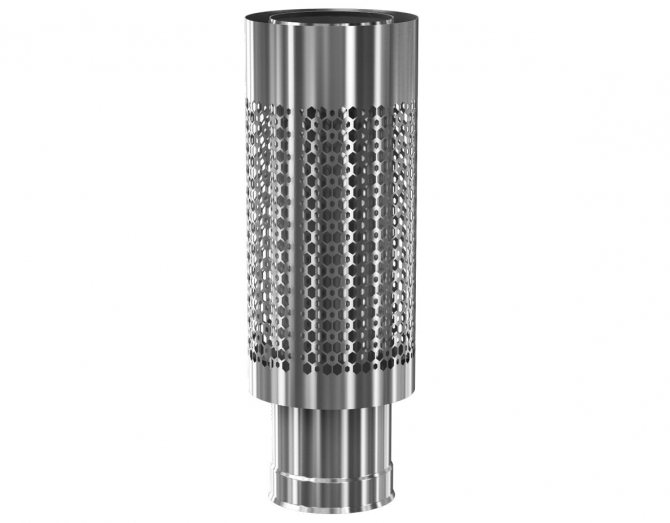
Sandwich mesh economizer for chimney pipes. - Homemade economizer - almost identical with the above-described finished products. We have already described how to make an effective economizer in one of the previous articles.
- Cleaning the boiler and flushing the heat exchanger - these are regular maintenance measures, meaningless for new boilers, but extremely effective for those in operation for at least several seasons. The fact is that during operation, scale and other salt deposits form inside the heat exchanger, the outer fins of the heat exchanger, burners and igniter are clogged. All this leads to an increase in gas consumption, a decrease in heat output, and, accordingly, a decrease in efficiency (often up to 20-30%). How and how often it is necessary to clean the gas boiler, we have also already disassembled earlier.
- Gas filter - it is installed in front of the gas mains shut-off valves and is designed to clean gas from debris and impurities sometimes found in the composition. This not only helps to reduce soot formation, but also, while improving the quality of the fuel, slightly reduces heat loss in case of underburning.
The rest of the methods consist in the correct start-up and adjustment work, which are carried out once, at the first start-up of the boiler, exclusively by specialists. With the correct initial setting, the efficiency guaranteed by the manufacturer is achieved.It is important to understand that it is impossible to increase this indicator by interfering with the technical device of the boiler itself, and even more so it is not safe.
Instructions Boilers Energy saving technologies
How to make efficiency high
There are many methods for increasing the efficiency of solid fuel equipment. Each of them helps to increase this parameter from 3 to 7%.
The most effective ways:
- Use of quality fuel. If possible, it is necessary to use only dry and high-quality raw materials for heating the room.
- Regular ash removal. If it is not possible to purchase expensive high-quality fuel, it is necessary to clean the chimney more often.
- Ventilation of the room. Since the combustion process takes place in the middle of the unit, it is necessary to ensure a stable flow of fresh air into the room where the equipment will be located.
- Reducing heat loss. If a residential building gives off heat faster than it heats up, buying better fuel or even new boiler equipment will not give the desired result. Therefore, it is necessary to insulate the living space, put new windows made of wood or plastic, reliable doors.
- Installation of auxiliary devices. To evenly warm up the house, it is necessary to use a circulation pump. This method is very effective and helps to increase efficiency. If the old unit does not cope with the task of heating the house, then you can purchase an inexpensive boiler and install it in a cascade. Additional equipment can be used when the old one alone cannot cope with the heating task. You can find out the Vilo pumps for heating by the link.
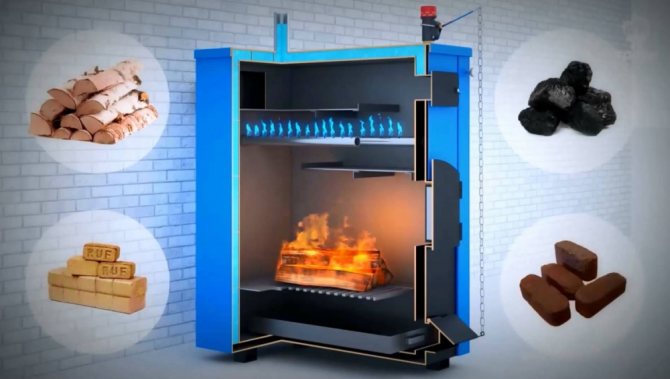

Long burning fuel units
The idea of creating solid fuel boilers for long burning with your own hands will certainly seem attractive to many. The beauty of such structures is that you only need to lay firewood in them a couple of times a day. A long-burning boiler differs from a traditional unit in that combustion in it starts from the top of the fuel fill. In this case, air is also fed into the fuel chamber from above.
The scheme of a long-burning solid fuel boiler assumes the presence of a water circuit around its body, so the water in it warms up qualitatively at any stage of the process. Since during the operation of the boiler, the entire tab does not burn at once, but only the top layer of fuel, it is enough for almost 30 hours. A number of universal solid fuel boilers using coal can work up to 7 days on one tab.
This design is not structurally complex and does not have any precise instruments that need to be connected to electricity. Therefore, the price for them is quite acceptable for the consumer. In addition, it is quite within the power of a home craftsman to assemble a solid fuel boiler according to ready-made drawings. You can make a heating boiler yourself and save a lot of money.
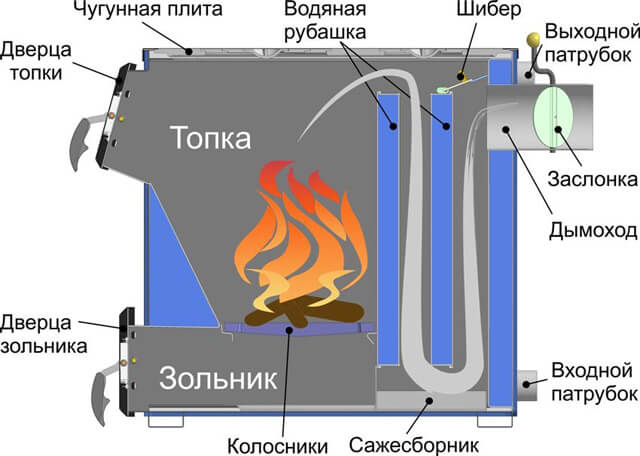

Here are some of the disadvantages of these designs. Fuel cannot be added to a running boiler. The firewood for the boiler must be well dried (no more than 20% moisture content) and cut into small logs. Coal can only be used of high quality, with a low slag content. In addition, units of this type are limited in power - as a rule, no more than 40 kW.
Another type of solid fuel boilers is pellet units. Their difference is that pellets from woodworking waste are used as fuel. Most of the industrial models have a special hopper from which the pellets are automatically fed into the furnace.

